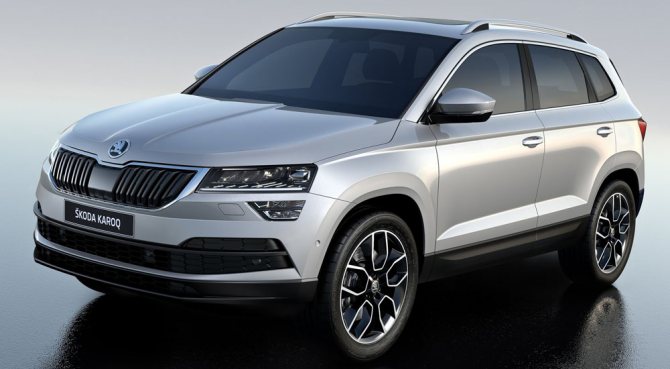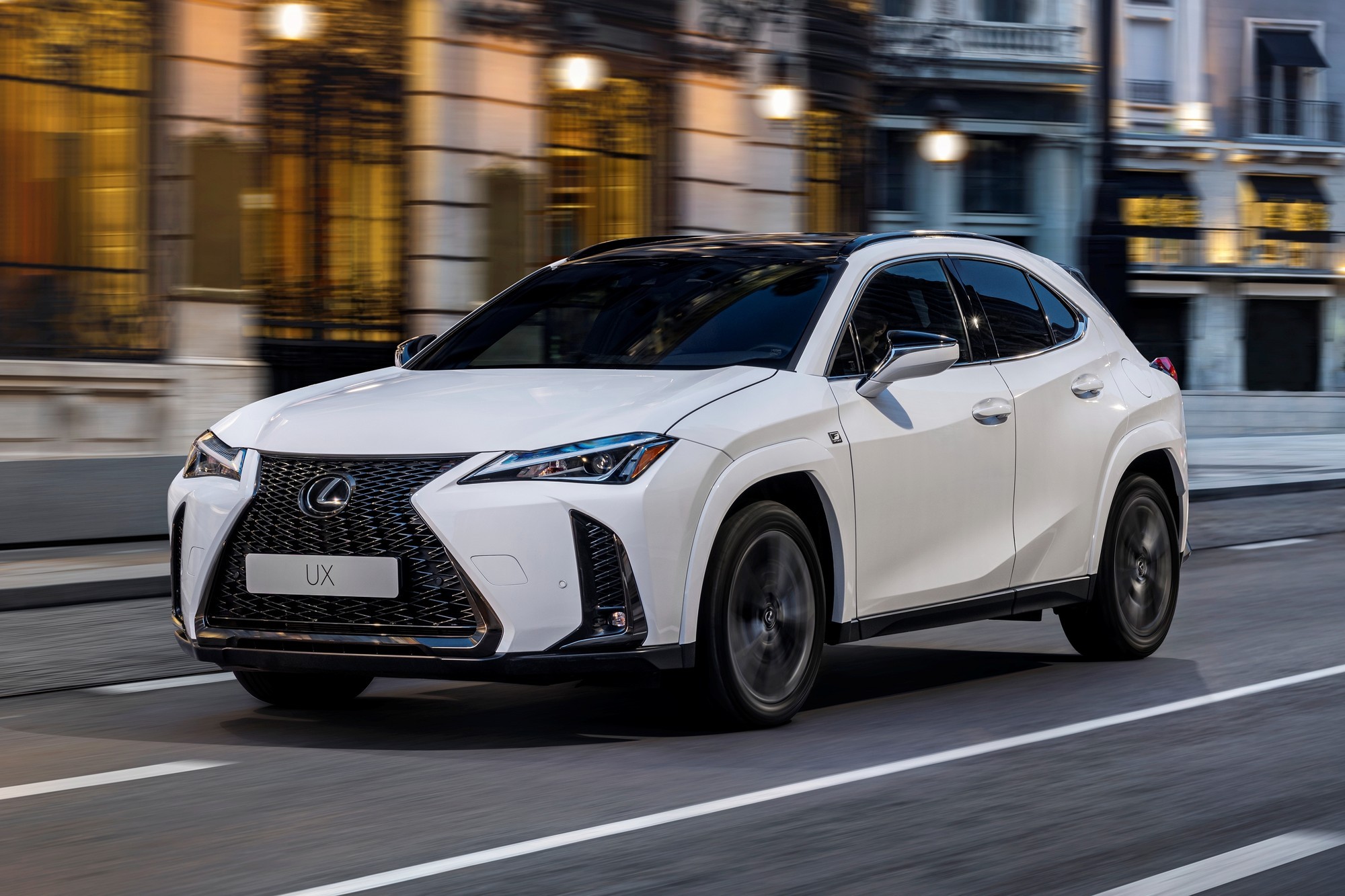
8 things we learned after driving 3. km from Skoda Karoq
Content
- Route
- 1. Luggage rack may not be enough for four people packed for two weeks.
- 2. The gearbox does not work well in the mountains
- 3. Navigation is a big plus
- 4. Convenient configuration of the VarioFlex seat
- 5. Refrigerator in the car makes the trip (and stay!) More enjoyable
- 6. You need a 230V socket more than you think
- 7. Karoq has very comfortable seats, although there is not much space in the back.
- 8. Fuel consumption with a roof rack is decent
- Summation
We recently covered a long distance in our test Skoda Karoq. It turns out that even those features that suit us in everyday life were perceived differently when traveling. What are we talking about?
The holiday period is the best time to test our truckers on…long distances. Although we already travel a lot in Poland, if we want to discover more advantages and disadvantages of this car - after driving about 1400 km at a time, we get an even better picture. In addition, come back and walk another 1400 km.
If something hurts at a short distance, it can become a horror on a long journey. Have we experienced this in a Skoda Karoq with a 1.5 TSI engine and a 7-speed DSG?
Read more.
Route
We took our Skoda Karoq to Croatia. This is a popular holiday destination for Poles - probably many of you also went there this summer. For the same reason, those who may be interested in buying a Skoda Karoq may be curious about how a car with a gasoline engine, in addition to an automatic transmission, will behave on a long journey. We already know.
We started from Krakow. Then we drove through Budapest to Bratus pod Makarska, where we spent the rest of our holiday. To this is added a trip to Dubrovnik and Kupari, return to Makarska and departure to Krakow via Bratislava. Including local riding, we covered a total of 2976,4 km.
Okay, this is the tour. What are the conclusions?
1. Luggage rack may not be enough for four people packed for two weeks.
The Karoq has a fairly large trunk. Holds 521 liters. In the city and on short trips, it seems like we carry a lot of air with us and should be more than enough. However, it turns out that when four people decide to go on a two-week vacation, 521 liters is still not enough.
We were saved by an additional roof rack. This is an additional PLN 1800 to the price of the car, plus PLN 669 for the crossbars, but it is also an additional 381 liters of luggage that we can take with us. In this configuration, Karoq has already completed its task.
You may be afraid that riding with a roof rack will be problematic. After all, this often means higher fuel consumption and increased driving noise. We'll get to the fuel issues a little later, but when it comes to noise, the Skoda's box is quite streamlined. We drove on freeways most of the time and the noise was tolerable.
2. The gearbox does not work well in the mountains
Traveling to the south of Europe also involves driving on mountain roads. As a rule, the work of the 7-speed DSG suits us and we have no objections either to the selected gears or to the speed of operation, in the mountains - in combination with the 1.5 TSI engine - its shortcomings showed up.
On winding roads with a large elevation difference, the DSG in D mode was a little lost. The gearbox wanted to reduce fuel consumption as much as possible, so it chose the highest possible gears. The ramps, however, had to be reduced, but they were made rather sluggishly.
We tried to solve the problem of driving in sport mode. This, in turn, had little to do with a comfortable vacation ride. This time, the gearshift stalled and the engine howled at high revs. Although there was no longer a shortage of power, the acoustic impressions quickly got boring.
3. Navigation is a big plus
A trip to Croatia showed us how well Columbus factory navigation works with a 9+ inch touchscreen and maps of Europe.
The routes calculated by the system make a lot of sense. You can easily add intermediate points to them or search for gas stations along the route. Most of the places we were interested in were at the base, and if they were not there ... then they were on the map! It's hard to tell where this comes from, but luckily the touch controls on this screen work pretty well. Thus, you can manually select a point on the map and set it as an intermediate or end point.
Karoq navigation has definitely made life on the go easier.
4. Convenient configuration of the VarioFlex seat
The VarioFlex seating system costs an additional PLN 1800. With this option, the rear seat becomes separate, three seats that can be moved separately. Thanks to this, we can increase or decrease the volume of the trunk depending on the needs.
As we wrote earlier, the trunk turned out to be small. And in addition, we took a 20-liter travel refrigerator with us? Where did we find a place for her? The middle chair was left in the garage, and a refrigerator appeared in its place. Voila!
5. Refrigerator in the car makes the trip (and stay!) More enjoyable
Since we mentioned the refrigerator, this is a really nice gadget. Especially when traveling on vacation and especially in warm countries.
When the temperature is above 30 degrees outside, the opportunity to drink something cool makes you feel very comfortable. It's the same with food - all the fruits are still fresh. Either way, the benefits of refrigerators have been known for over 100 years. Just bring them to the car.
The fridge also came in handy when we decided to go a little further. Drinks are packed, the car is in the parking lot, the refrigerator is in hand and on the beach. With such a reserve, you can lie down all day 😉
6. You need a 230V socket more than you think
A built-in 230 V socket can always come in handy, but we saw it for the first time. The refrigerator is adapted for transportation in a car, so it can be charged from a 12V socket.
However, a problem arises when people traveling in the back want to charge their phones or other electronic equipment from this outlet. Connecting the refrigerator to their only power source would require constant juggling with forks and cooling breaks.
Fortunately, the refrigerator manufacturer also provided for charging from a 230V socket, and Skoda Karoq was equipped with such a socket. The plug connects once and you can travel all over Europe and passengers can still charge their phones.
It seems to be nothing terrible, but in fact it was very convenient. Especially now that (other than the driver) we're used to heavy phone use while traveling.
7. Karoq has very comfortable seats, although there is not much space in the back.
The higher landing of the SUV allows you to make longer trips. The Skoda Karoq seats have such a wide range of adjustments and a comfortable profile that even driving more than 1000 km at a time did not cause any inconvenience - and this is perhaps the best recommendation for seats.
The driver and front passenger are happy. The two rear passengers are happy… but at this distance they would have preferred a little more legroom.
8. Fuel consumption with a roof rack is decent
We drove exactly 2976,4 km. The total travel time is 43 hours 59 minutes. The average speed was 70 km/h.
How did Karok end up in such conditions? Recall the equipment - we have a 1.5 TSI with a capacity of 150 hp, a 7-speed DSG gearbox, four adult passengers and so much luggage that we had to save ourselves with a roof box.
The average fuel consumption along the entire route was 7,8 l/100 km. This is really a good result. Moreover, the dynamics did not suffer. Of course, a diesel would consume less fuel and the total cost of the trip would be lower, but for the 1.5 TSI we are satisfied.
Summation
As you can see, many conclusions can be drawn during the first long trip. These are observations that are barely noticeable in everyday use. A fairly large trunk turns out to be small, there is enough legroom in the back, but not when the passenger has to travel more than 1000 km. We won't know if we just drive through the city.
However, here we have another conclusion. In our profession, we even work on vacation - but it's pretty hard to complain about it 🙂
